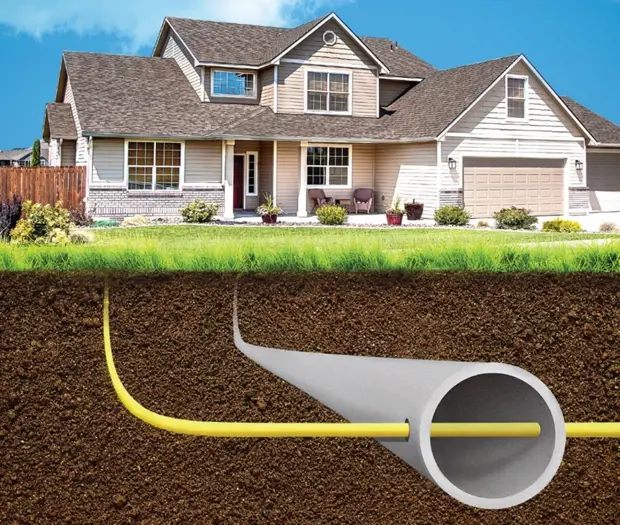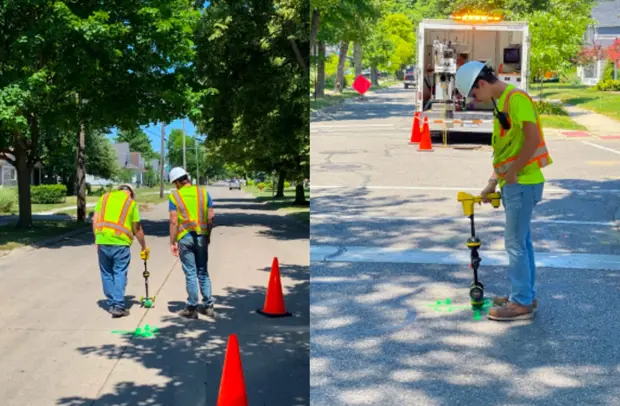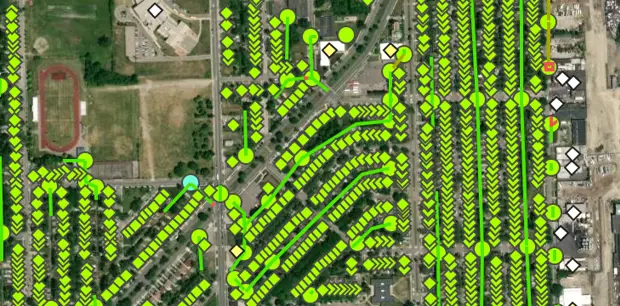
Cross-Bore Locating, Inspection & Prevention
Mitigate Risk, Service Disruptions, Expensive Repairs & Safety Risks
To mitigate risk, municipalities and utilities need to inspect for any cross-bores that currently exist and implement a program to prevent cross-bores. A cross bore is a situation where underground utility lines, such as gas pipes, water pipes, electrical lines, or communication cables have been directionally drilled through a sanitary or storm lateral. This can lead to hazardous and costly problems ranging from utility damage, service disruption, expensive repairs, or safety risks.
Cross bores can lead to dangerous situations, such as gas lines intersecting with sewer lines. This creates the potential for gas leaks into sewer systems, posing a serious safety hazard to both utility workers and the public. While implementing cross bore inspection services may incur initial costs, it can lead to significant savings in the long run by preventing accidents, minimizing service disruptions, and avoiding the costs associated with emergency response and environmental remediation.
View and download more information about this service:
Cross-Bore: Cross-Bore Locating, Inspection & Prevention

Utility Damage: Cross-boring can cause damage to utility lines which could lead to water or gas leaks or ruptures.
Service Disruptions: Cross-boring can interrupt services which can result in disruptions to power, water supply, telecommunications, or other essential services.
Service Restoration Delays: The process of identifying, locating, and
repairing cross-bored utilities can be time-consuming, leading to prolonged service disruptions.
Safety Hazards: Gas leaks resulting from cross-bored pipelines can pose serious safety hazards, potentially leading to explosions or fires and exposure to live electrical lines.
Financial Costs: Repairing the damage caused by cross-bored utilities can be expensive, both in terms of the direct repair costs and potential legal and liability expenses.

Locating & Pre-Inspections
A pre-inspection is televising the lead or main with a CCTV system. This inspection will depict the location and depth to have the information to prevent potential cross-bores. Typically, at the main, curb, property line, and foundation. Wooden stakes and/or paint marks are left in the yard for a visual and a drawing of the parcel can be included.
Post Inspection
A post-inspection is performed after the directionally drilled utility is installed. This visually verifies there is not a cross-bore. In the event there is a cross-bore, it is documented with paint and pictures of the damage. The owner of the utility is informed immediately.

Pre- and post-inspections are performed across a variety of municipalities – from large scale installation projects to single addresses. In the event an inspection cannot be performed with a Lateral Launch System, our skilled house entry crews can perform the inspection from an internal or external clean out, pulled toilet, or roof vent. All inspections include a drawing of the parcel, video, and pictures. Included in the prevention program is storing this information on our ArcGIS platform to keep historical records to show areas where this risk is higher.
Related Services
With years of experience in the industry, our team of experts have encountered and successfully resolved a wide range of issues. While performing Cross-Bore Inspection Services, our technicians may identify issues that require immediate attention and can provide CIPP Spot Services to mitigate a potential safety hazard.

